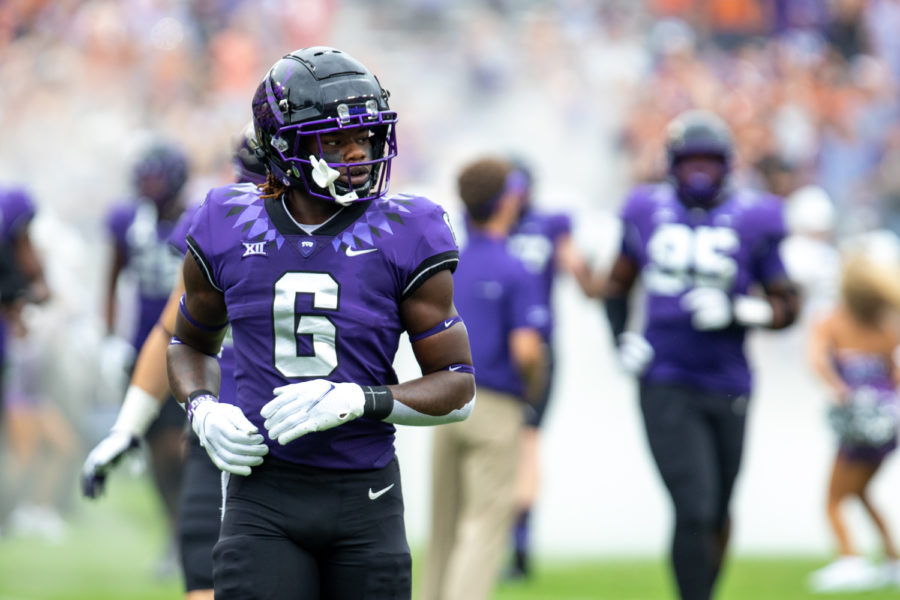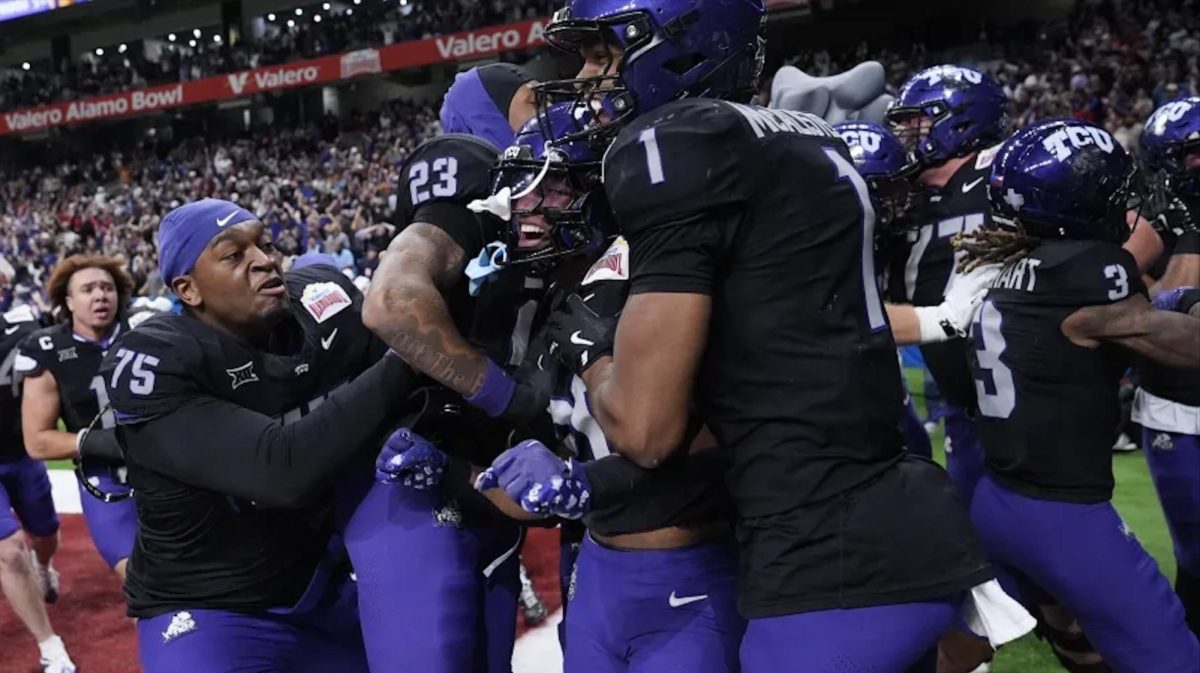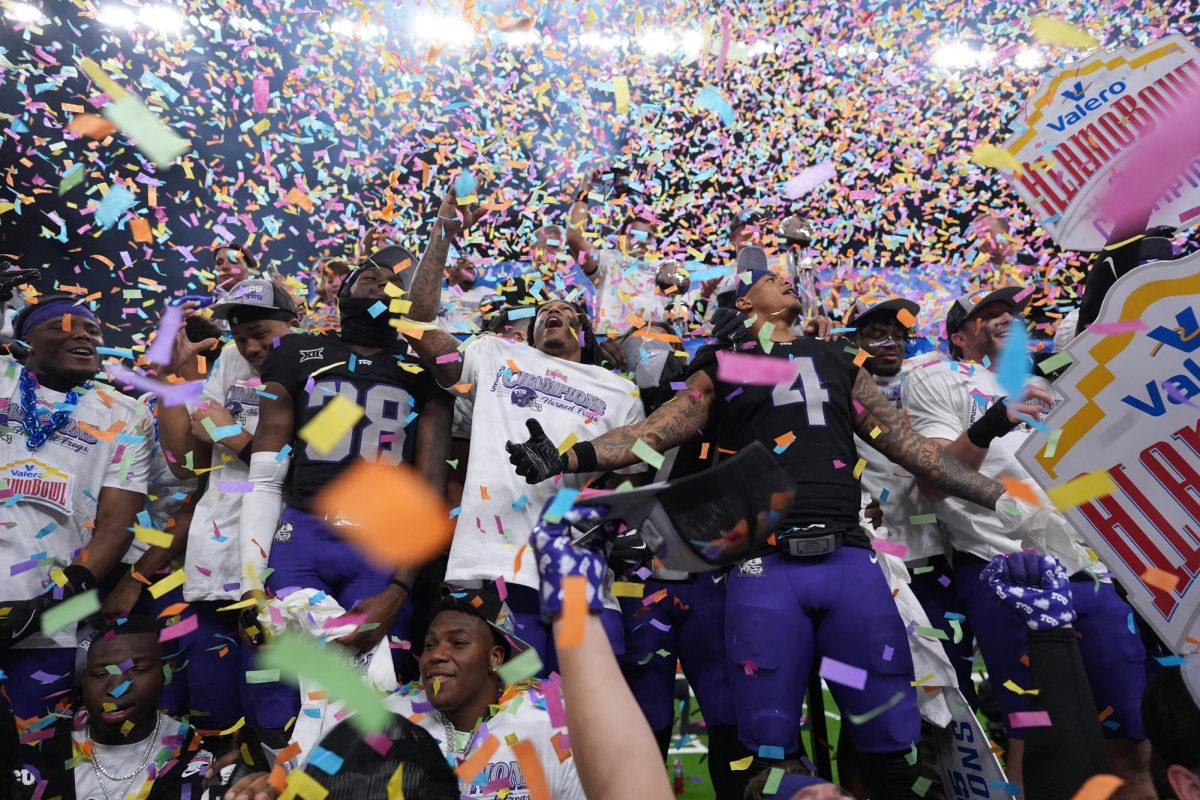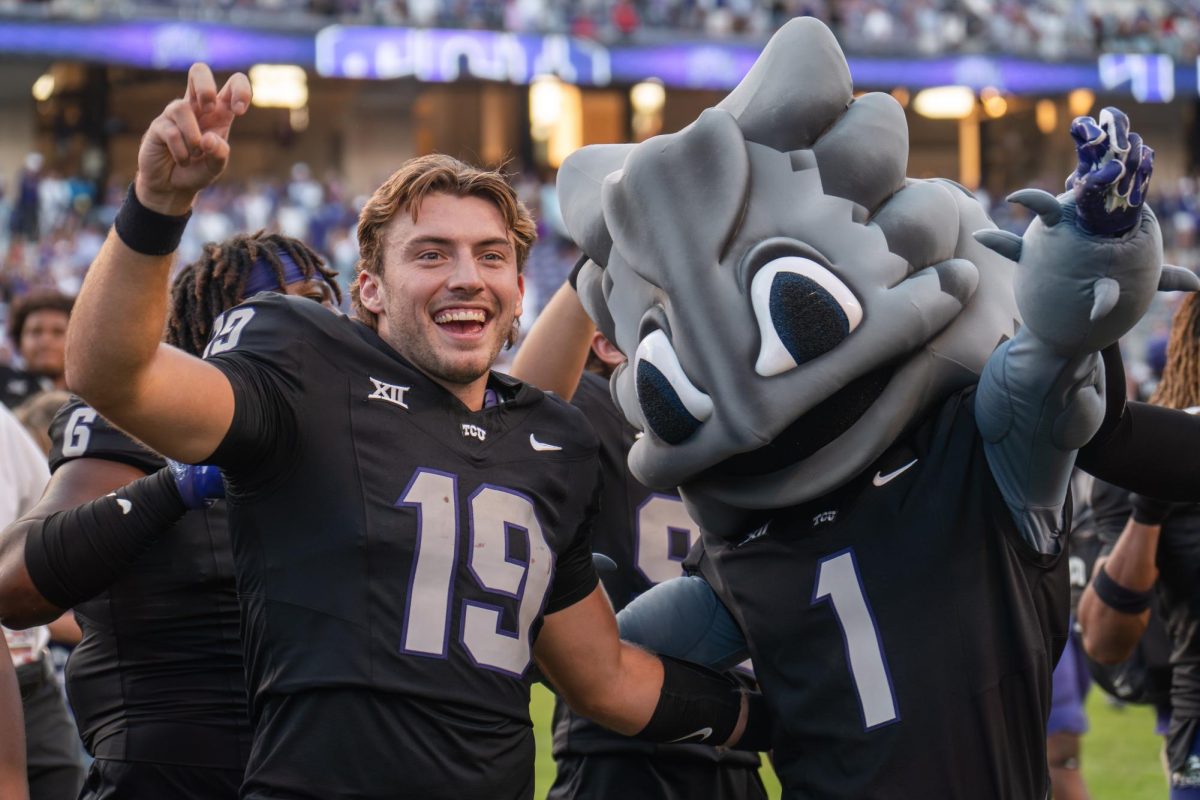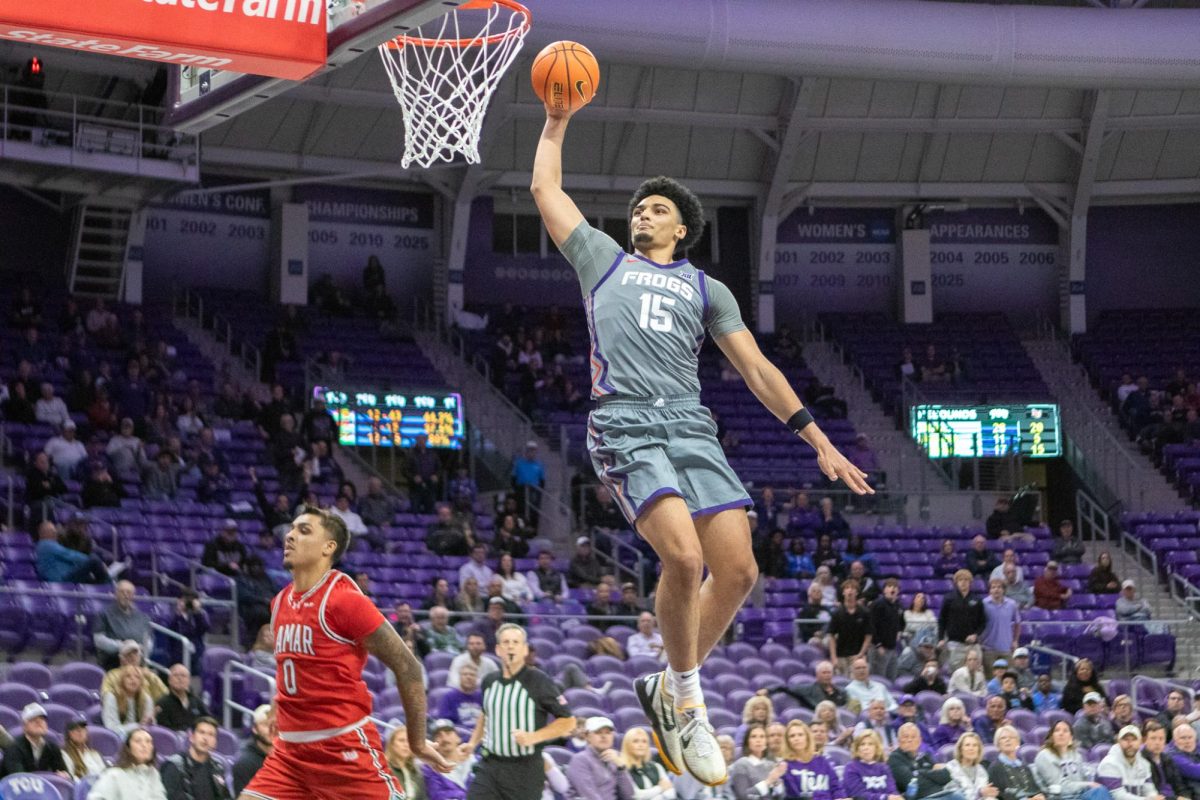Finish strong – even amidst the mediocrity that TCU football has seen over the last four years, that mindset has remained true of head coach Gary Patterson and his Horned Frogs.
“Since I’ve been here, we’ve always been a team to finish strong, more than anything, in the second half of the season,” junior defensive end Ochaun Mathis said. “We’re going to just come out there and do what we have to do this half of the season.”
In 2018, TCU won three of their last four games to reach bowl eligibility before defeating California 10-7 in the Cheez-It Bowl. After a disappointing end to 2019, the Frogs won five of their last six games in 2020, bouncing back from a 1-3 start to earn a spot in the Texas Bowl.
Halfway through the 2021 season, TCU finds itself with a similar opportunity. The Frogs are currently 3-3 and need to win half of their remaining contests to make a bowl game.
Despite their slow start to the year, simple bowl eligibility is not all that TCU is chasing.
“Personally, we’re not resetting any goals for the conference because we believe that there’s going to be a team in the conference championship with two losses in conference [championship],” offensive tackle Andrew Coker said. “We feel like that’s still an option.”
An appearance in the Big 12 championship would likely require TCU to win out, so they are focusing on getting one win at a time as they try to achieve the improbable in the form of a season turnaround.
Step one in this goal is a matchup at home with West Virginia this Saturday. Here are three things the Frogs need to do against the Mountaineers to get back in the win column.
1. Open up the passing game by establishing the run
It is no secret that the TCU offense needs to show out to make up for the inadequacies of their defense. The Frogs have given up 30 or more points to each opponent this year, with the exception of Duquesne.
Last week, star running back Zach Evans was ruled out moments before the game with an injury, and the Frogs averaged just 4.7 yards per carry on the night.
Though quarterback Max Duggan was still able to perform well in Evans’ absence (career-high 346 passing yards), West Virginia’s balanced pass rush represents a threat to the signal caller’s success if the TCU run game does not get going.
Both ranking in the top five of the Big 12 sack leaders, defensive linemen Tajh Alston (five sacks) and Dante Stills (four sacks) have led a West Virginia that has 80 quarterback pressures in six games this season.
Though he has just two sacks on the season, defensive lineman Akheem Mesidor has also been effective for West Virginia in the pass rush, leading the team with 16 total quarterback pressures and highlighting the depth that the Mountaineers have in that department.
There is no better way to take pressure off of a quarterback and extend his time to be effective in the passing game than running the football with efficiency.
On Tuesday, Patterson said that Evans was “probable” for Saturday. If the sophomore is able to play, his Big 12-leading 7.9 yards per carry (minimum 50 attempts) will be crucial for TCU as they seek to keep their offensive rhythm going.
2. Get to the quarterback
Especially if cornerback Tre Tomlinson is unable to return (currently listed as “questionable”), the TCU pass defense is unlikely to see much improvement for the remainder of the season because of injuries and lack of depth.
West Virginia ranks third in the Big 12 with 265.8 passing yards per game, while TCU comes in at seventh in the conference with 235.2 passing yards given up each game.
For the fourth-straight game, the Frogs are facing a team that has played multiple quarterbacks this season, and West Virginia head coach Neal Brown has said this week that both Jarret Doege, their week one starter, and backup Garrett Greene will get playing time on Saturday.
Regardless of who is under center for the Mountaineers, they will have an opportunity to have a break-out game against a weak TCU secondary unless the Frogs are able to be effective in the pass rush.
This would be fairly uncharacteristic for TCU, as they have just eight sacks this season (ninth in the Big 12), but West Virginia’s conference-high 16 sacks given up (tied with Texas) presents a prime opportunity for the Frogs to get this ball rolling.
A key figure in this goal for TCU will be Mathis, who recorded two sacks on Saturday against Oklahoma. Both sacks helped hold the Sooners to field goal attempts, and the junior believes this will propel him to greater success going forward.
“It definitely gives me the feeling of what I have to do to get my pass rush off against guys who play as good as the guys we’ve played against,” Mathis said. “Having that opportunity to play against Oklahoma and get those two sacks has definitely put me ahead.”
Especially if Green, a redshirt freshman, is in for the Mountaineers, a strong pass rush by Mathis and the Frogs will help throw off the West Virginia pass attack and prevent them from moving the ball well.
3. Feed Quentin Johnston
One of the great things about college football is that the greatest players can often get touch aftertouch and still be effective, regardless of what the opposing defense schemes up to stop them.
TCU felt this all too well against Texas, as the Longhorns handed it off to running back Bijan Robinson six straight times on their final offensive drive to run the clock out and keep the Frogs’ offense from getting another drive.
With a 6-foot-8-inch frame and excellent speed for his size, wide receiver Quentin Johnston represents one of these types of players for TCU.
On Saturday, Frog fans got a taste of what TCU can achieve offensively when they put trust in the sophomore, as he put up career-highs of seven catches, 185 yards, and three touchdowns (all of which were contested).
“Obviously, Max [Duggan] has a lot of trust in me, and I appreciate him for that, throwing the ball up, trusting me,” Johnston said after the game. “Coach [Patterson] is trusting me that I can make the big plays.”
What stood out most about Johnston’s performance was that the majority of his catches, including all of his scores, came on plays when the defenders were in perfect positions to make plays. The physical wideout simply out-muscled the cornerbacks each time to make the play.
Regardless of his ability to make contested catches, Johnston has never been targeted more than 10 times in a game in his TCU career, seemingly putting a cap on his full potential as one of the Big 12’s best receivers.
With that in mind, especially against a West Virginia pass defense that has given up 248.5 yards per game through the air (ninth in the Big 12), TCU needs to get Johnston the ball more, as the young star has a chance to finish as one of the great receivers to ever don the purple and white.
TCU kicks off against West Virginia on Oct. 23 in Amon G. Carter Stadium at 6:30 p.m. on ESPNU.

